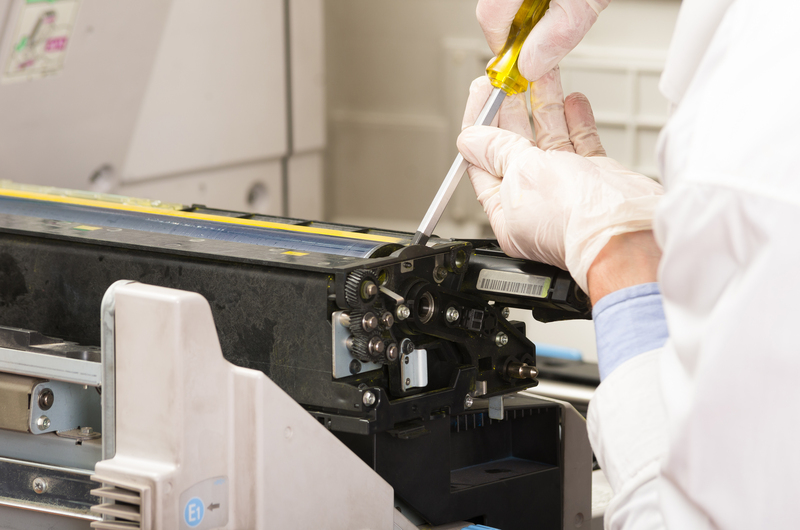Resourceful Methods to Cut Manufacturing Waste
In today's dynamic manufacturing landscape, reducing waste is not only good for the environment but also critical for a company's bottom line. The drive to cut manufacturing waste effectively involves a blend of innovative techniques and strategic adjustments. This article delves into these methods, providing a comprehensive guide for businesses eager to enhance their sustainability efforts.
Understanding Manufacturing Waste
Before diving into waste reduction strategies, it is essential to understand what constitutes manufacturing waste. Waste in the manufacturing sector can be defined as any resource or material used in production that does not add value to the end product. It encompasses a wide array of elements, including excess materials, inefficient processes, and energy wastage.
Types of Manufacturing Waste
Manufacturing waste can typically be categorized into several types, including:
- Material Waste: Excess or spoiled raw materials.
- Energy Waste: Inefficient use of energy resources throughout the production cycle.
- Time Waste: Delays and downtime in production processes.
- Defective Production: Products that do not meet quality standards.
- Overproduction: Producing more than the immediate demand, leading to surplus.


Effective Strategies to Cut Waste
1. Lean Manufacturing
Lean manufacturing is a systematic method for waste minimization within a manufacturing system, without sacrificing productivity. Its core principle, often termed as "doing more with less", aims to provide the right quantity of materials in the right place at the right time.
- Value Stream Mapping: This method visualizes the flow of materials and information necessary to bring a product to the customer. It helps identify and eliminate waste.
- 5S Methodology: Organizing and managing the workspace with steps: Sort, Set in order, Shine, Standardize, and Sustain.
- Just-In-Time (JIT) Production: Minimizing inventory and reducing waste by receiving goods only as they are needed in the production process.
2. Implementing Advanced Technology
The advent of technology plays a significant role in cutting manufacturing waste. By integrating advanced technologies, manufacturers can improve efficiency and reduce waste significantly.
- Automation and Robotics: These can help streamline operations and reduce human error, thus decreasing waste from defective products.
- AI and Machine Learning: By analyzing production data to improve process efficiency and predict equipment malfunctions before they occur.
- IoT Devices: Internet of Things sensors can monitor equipment performance and energy usage, optimizing resource use.
3. Recycling and Reusing Materials
One of the most effective methods to reduce waste in manufacturing is to recycle and reuse materials. This not only helps in cutting waste but also saves cost on raw materials.
- Closed-loop Recycling: Recycling waste products back into the production cycle, such as using scrap metal to manufacture new parts.
- Material Exchange Programs: Partnering with other businesses to trade excess or unused materials.
- Using Recycled Materials: Incorporating recycled materials in product design reduces dependency on virgin resources.
4. Energy Efficiency
Energy consumption is a significant contributor to manufacturing waste. Enhancing energy efficiency is a crucial step in reducing waste.
- Conduct Energy Audits: These audits help identify areas where energy is wasted and how it can be reduced.
- Optimize Equipment Performance: Regular maintenance of equipment to ensure it operates efficiently.
- Use Renewable Energy Sources: Switching to solar or wind energy can reduce dependency on non-renewable sources.
5. Employee Training and Engagement
Employees are at the core of any manufacturing process. Training and engaging employees can significantly contribute to reducing waste.
- Regular Training Sessions: Educating employees on waste reduction techniques and the importance of sustainability.
- Encouraging Suggestions: Creating an environment where employees can suggest ideas for reducing waste.
- Setting Clear Goals: Defining clear, achievable goals for waste reduction in the workplace.
Conclusion
Reducing manufacturing waste is not a single action but a commitment to continuous improvement through resourceful methods. By adopting techniques such as lean manufacturing, advanced technological integration, and robust employee training, businesses can make significant strides in their waste reduction journey. Implementing these strategies not only enhances environmental sustainability but also adds substantial value to the manufacturing process, leading to increased profitability and long-term growth.
Ultimately, integrating these resourceful methods will ensure that cutting manufacturing waste becomes a part of the company's core values, benefitting the environment and the business alike.